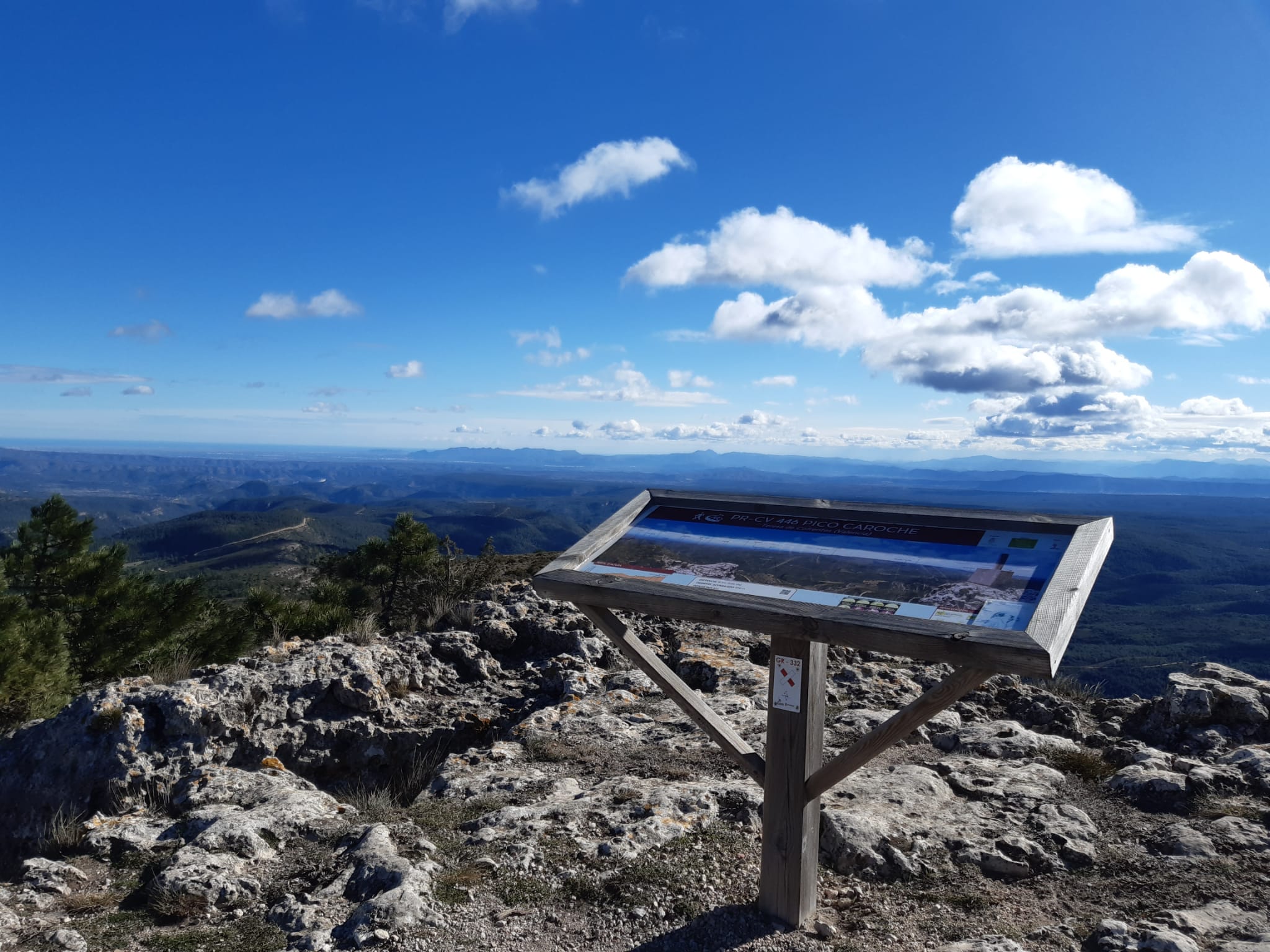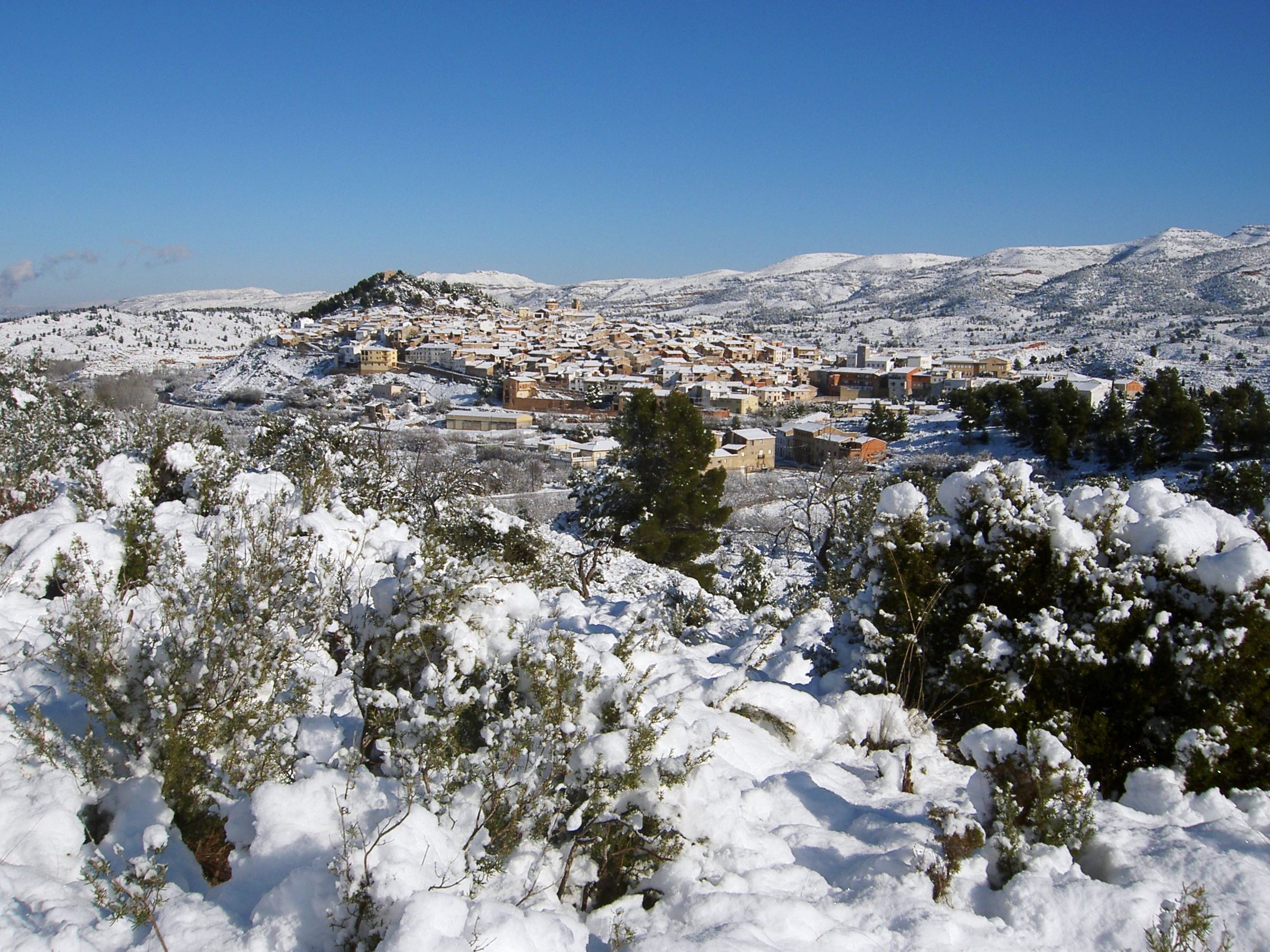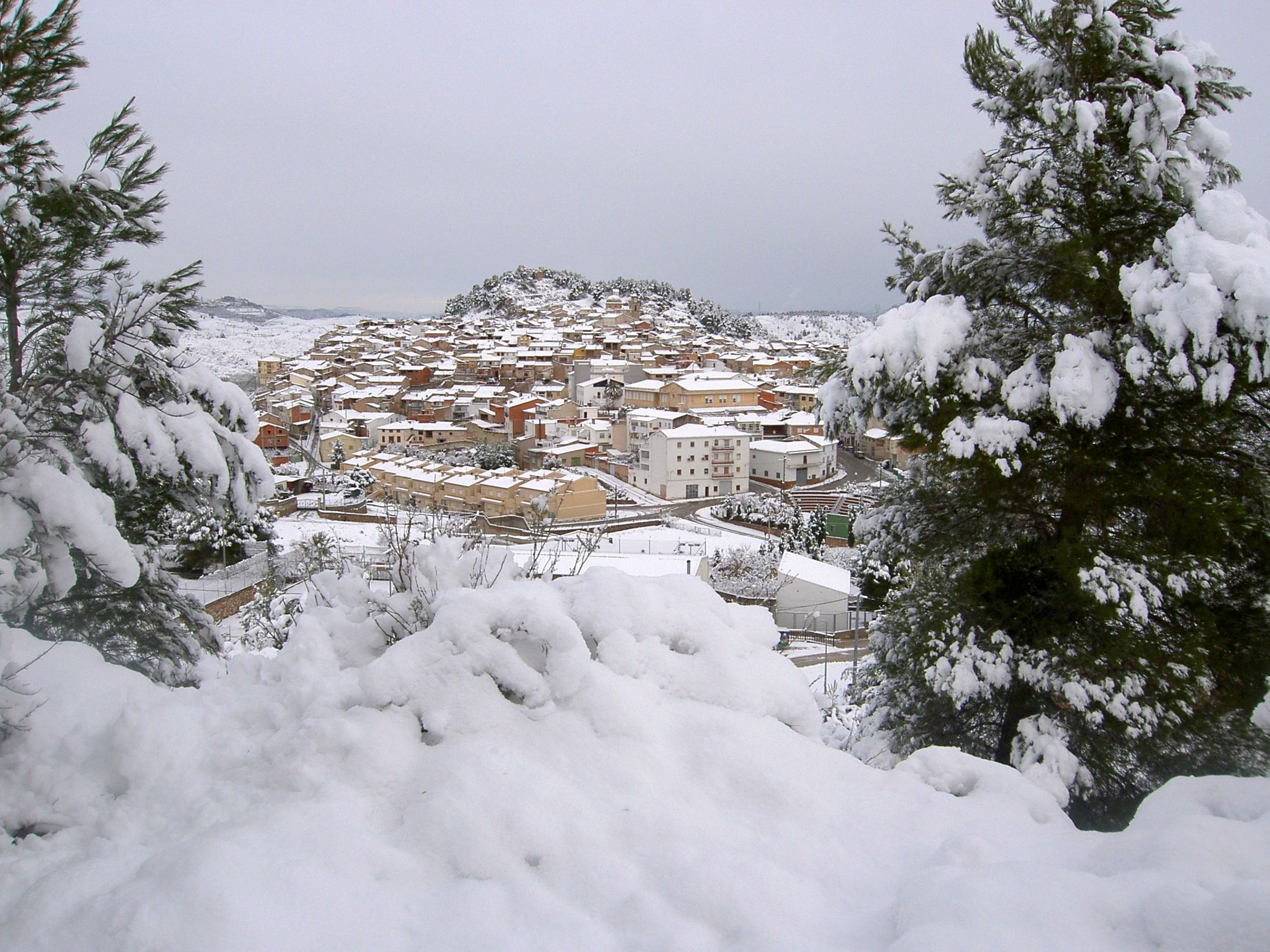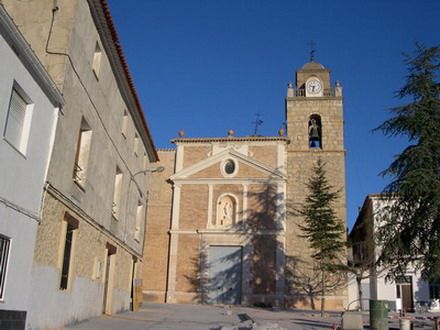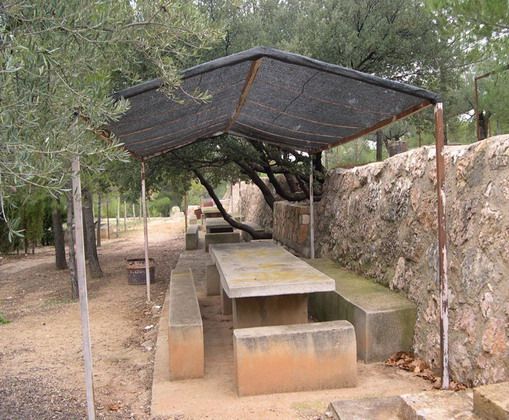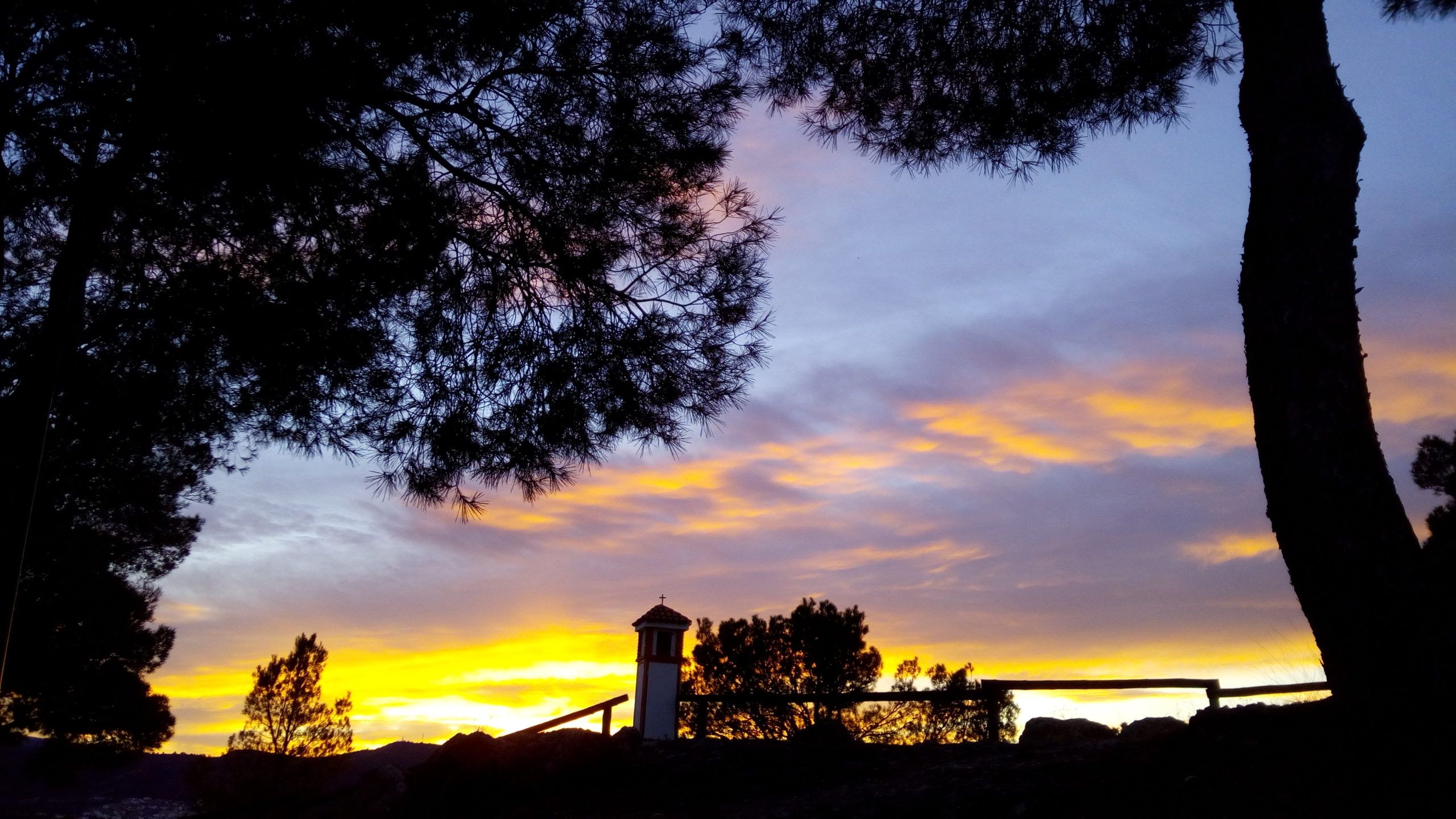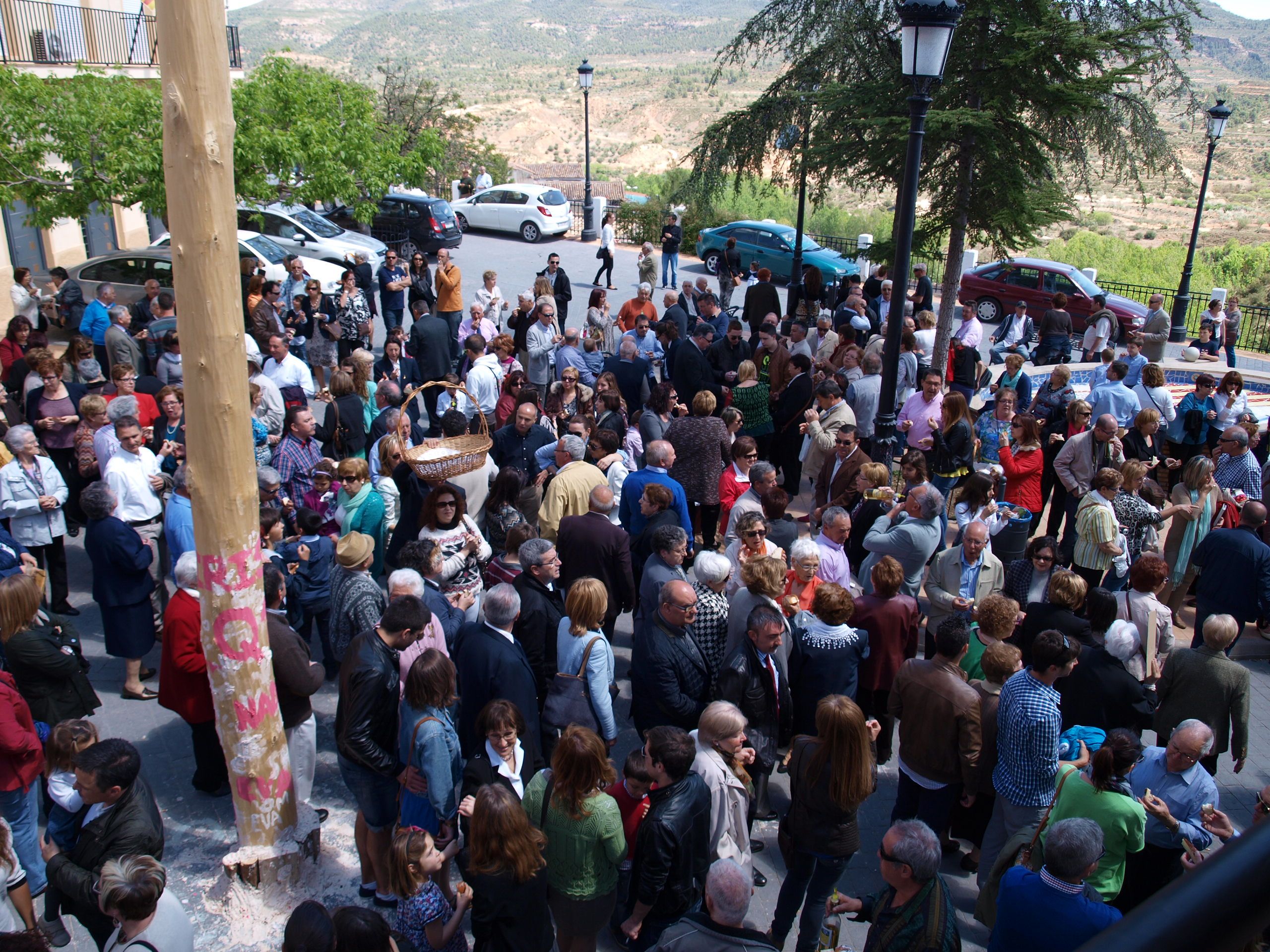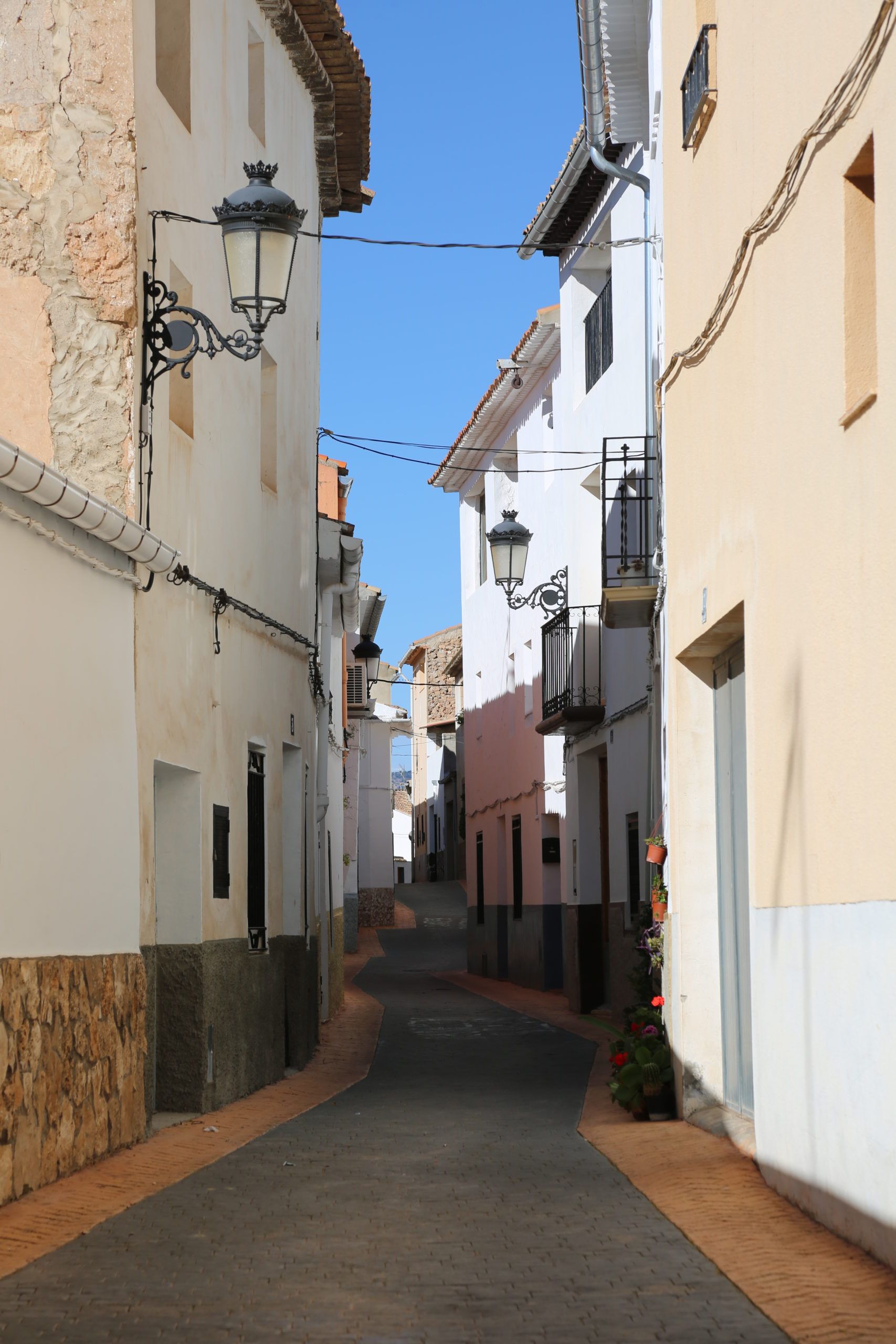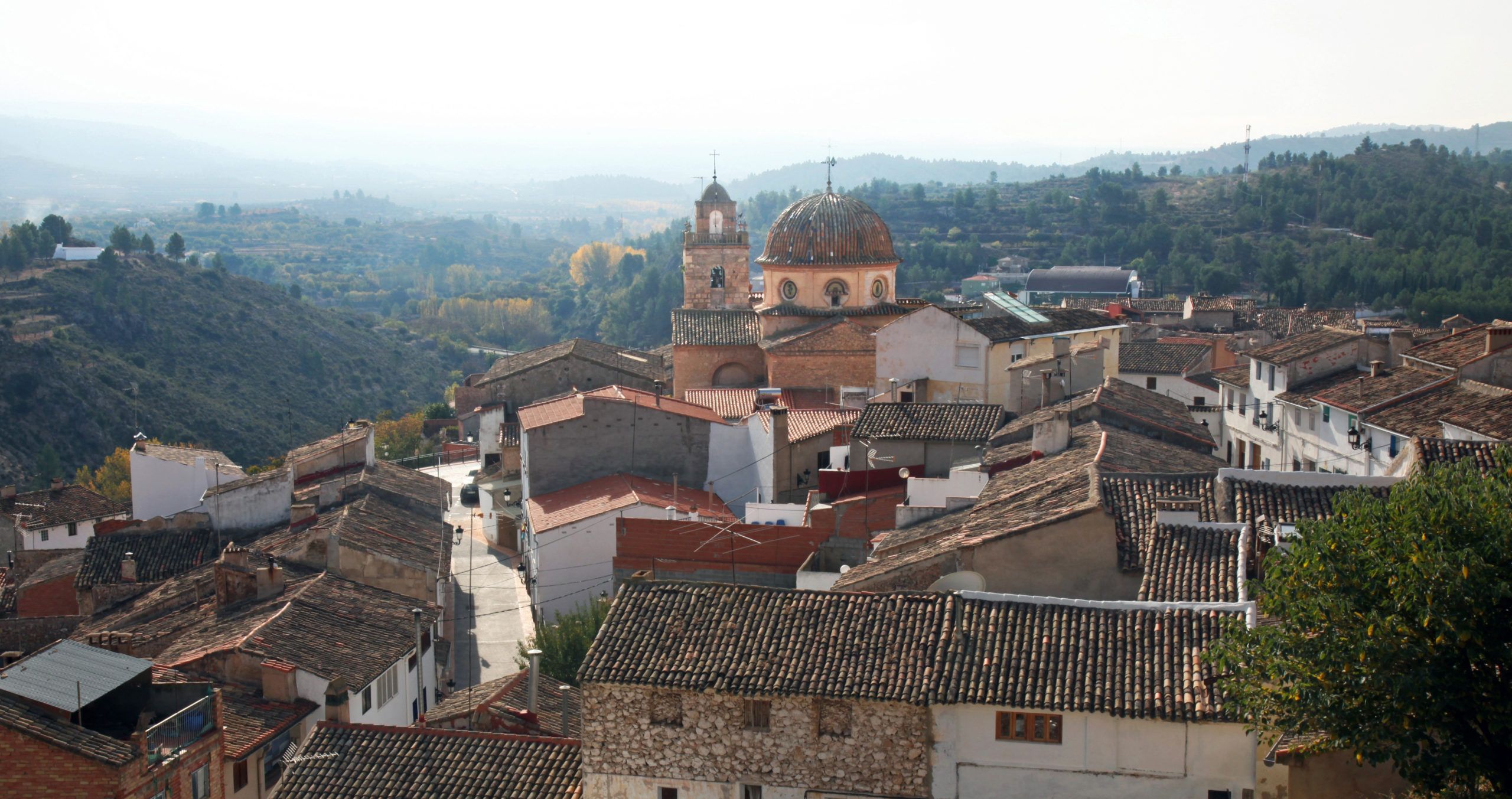Teresa de Cofrentes
A municipality of the administrative region of Valle de Cofrentes. It borders with: to the N, Jarafuel and Cortes de Pallas; to the E, Bicorp; to the S, Ayora; to the W, Zarra. With the exception of a narrow, western strip through which the River Reconque flows (which joins with the Rio Zarra near to Teresa to form the River Cantabán, a tributary of the River Júcar), the entire municipality is occupied by the cretaceous massif of the Caroig, a succession of peaks and gorges that form a highly-imbricated landscape. Mention may be made of El Pico de Caroig, a succession of peaks and ravines that form a highly-imbricated landscape. Mention may be made of El Pico de Caroig, El Alto de Tona, Pino Alto and La Pedriza. Other hydrographic accidents include the ravines of Argongeña and Sima, and La Rambla de Murell.
Gastronomy:
“Gachamiga” (prepared with pieces of liver, bacon, ribs, “libiano” and flour), “sopa cubierta” (soup made with chicken giblets), “patatas pobres”, meatballs, paella and gazpacho. Cakes: “mantecados”, sweet potato cakes, macaroons, muffins and “torta de candil”.
Places of interest:
The good fortune of being immersed in a rural location allows for a rich natural heritage that delights all the visitors to the village.
There are many country trails that are perfect for a wide range of sports, including races and hiking.
Furthermore, there is the area’s monumental heritage.
Natural heritage
Valle de Ayora and Sierra del Boqueron – Declared a Site of Community Interest (SCI), it covers an area of 19,740.71 ha.
Sierra de Martés – Muela de Cortes – Declared a Site of Community Interest (SCI), it covers an area of 71,162.76 ha.
Monuments
Parish Church of Our Lady of the Assumption (Plaza de la Iglesia)
The building underwent considerable work in the 19th-century, although it is possible that the construction of its structure dates from an earlier period. It has three naves that are communicated by means of semicircular arches and have barrel vaults. A dome with a thobolate on pendentives is located in the centre of the transept, and there is a choir at the foot of the entrance of the church. The bell tower is inserted into the layout of the church’s floor.
Hermitage of St. Apollinaris (Camino del Cementerio)
This hermitage, which was blessed on 3rd February, 1702, provides access to the village cemetery. It has a single nave and its walls are reinforced with external buttresses. The roof is composed of transverse arches which support a barrel vault. At the façade there is a belfry, with its bells, of great artistic value.
Torre de Palaz (Castillo de Palaz)
The origins of Teresa de Cofrentes lie in its castle, which was built by the Romans and later used by the Muslims. There are scant remains of the castle today. The village had another, smaller castle known as Palaz, of which only the ruins of the tower remain.
Festivities:
Our Lady of the Assumption, 15th August.
Saint Blaise, 3rd February, bonfires, paella, awarding of locally-made wooden tools.
Holy Week festivities (organized by “los quintos”) Holy Week and Easter, traditional planting of a black poplar, street dances, distribution of blessed bread
